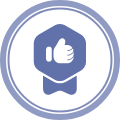Changing the Faces, Minds and Voice of Healthcare
Diversity, Equity and Inclusion was a growing priority across many aspects of the American healthcare system before the COVID-19 pandemic and the recent intensified focus on social and racial justice issues. Today, it’s difficult to find a healthcare organization that doesn’t emphasize its DE&I initiatives, policies and progress to at least some degree. COVID-19 shone a bright spotlight on the systemic and often lethal economic, geographic and racial imbalances in the American healthcare system, and stakeholders of all kinds are demanding tangible change.
Today, one central focus of DE&I efforts among healthcare enterprises is changing the “face” and “voice” of their organizations. This includes taking a critical look at staffing to represent greater diversity in the race, ethnicity and multi-lingual capabilities of their professionals, from front-line clinical staff to vital support functions. This kind of intentional approach is critical to building a foundation for immediate and long-term DE&I change. An important start, but only a start.
Changing the minds of healthcare
A more difficult task is changing the “minds” of American healthcare. That is, the thinking, imagination and behavior of payers, providers, hospitals, clinics, government regulators and ultimately, patients. Innovative thinking is key to delivering more equitable access to quality healthcare to America’s diverse populations and patients.
The rapid expansion of telehealth during the COVID-19 pandemic is one dramatic example of innovative healthcare thinking and behavior in action. While telehealth availability had steadily grown in recent years, adoption lagged due to structural challenges as well as entrenched mindsets about the necessity of in-person encounters. The pandemic was the mother of sudden, accelerated progress.
Recognizing the immediate priority for safety, in March 2020 the federal government announced the temporary expansion of 85 Medicare service items permitted by telehealth. By April 2020, 63 state actions were issued easing their policies and guidance for the use of telehealth services, including a relaxation of requirements for telehealth practitioners to be licensed in-state.
Revised telehealth regulations make remote access a more common and now likely indispensable part of American healthcare delivery. Yet, it also opened the door to expanded access for the 7,200-plus federally designated health professional shortage areas identified by the Association of American Medical Colleges in 2020. Sixty percent of these areas are rural. The rest include economically disadvantaged urban areas and large pockets of non-English speaking individuals. Telehealth means that rural patients may not need to travel 60—or in some cases, far more—miles to consult an internist or specialist. Non-English-speaking patients may have easier access to medical translation services.
Although there’s nearly universal agreement that telehealth is here to stay, difficulties remain: varying and conflicting state regulations, clinical availability, medical staff and equipment to meet demand, limited mobile device telehealth capabilities, lack of access to technology among patients in need, and guidelines for in-person versus telehealth visits. The challenge is to make quality telehealth as easy and accessible as possible to reach more patients.
Novel and “refreshed” thinking
Beyond technology, new thinking is needed to meaningfully expand healthcare access. For example, to help solve the growing shortage of rural doctors, well before the pandemic, more than 40 American medical schools had created rural training tracks. Two out of three graduates of the Rural Physician Associate Program at the University of Minnesota Medical School have gone on to practice in that state, and 40 percent of them practice in rural locations. Of the 127 doctors who graduated from the University of Colorado Medical School’s rural track since it began in 2005, 35 percent are practicing in communities considered rural or frontier.
Another example of innovative, inclusive healthcare thinking in action is the population health mindset and community-level partnering pioneered by Health Leads, a non-profit organization. They help providers and payers understand that health for many economically disadvantaged patients can include such basic needs as adequate food, decent housing, and refrigerators to store certain critical medicines.
They “partner with local organizations to bring together services, treatments, technology, data and resources in new ways to achieve the health goals that matter most to that community.”
Refreshed thinking can be seen in recent uses for mobile healthcare models. Mobile blood banks have been successful for many years. In 2020, mobile strategies for COVID-19 testing were deployed all over the U.S. In 2021, many states added mobile COVID-19 vaccine units for underserved communities. These services could easily be expanded to place greater emphasis on mobile primary care—filling a critical gap necessary to manage health at a population level.
Just prior to the pandemic, the mobile physician practice market—old-fashioned house calls—was estimated to be $350 billion, with an estimated compound annual growth rate of 5.1 percent between 2021-2026. Chances are good that post-pandemic growth estimates will be higher.
Changing the voices of healthcare
As health organizations diversify their workforces and provide more services to expand healthcare access, communication becomes especially critical. It’s not enough to “just do it.” A 2021 survey by a leading healthcare recruiter indicated that 50 percent of healthcare employers believe that communicating their DE&I efforts offers the most room for improvement.
This is an indication that healthcare organizations of all kinds should double down on building awareness of internal and external DE&I goals, initiatives and progress. Educate and explain accessible services using language and venues familiar to different populations. Leverage other healthcare and community partners to create a united front for communicating important issues and offerings. Be creative about partnering with organizations in touch with key underserved populations. Find ways to communicate with people who are not “plugged in” to current technology. Making communications as diverse and inclusive as core DE&I goals and offerings is critical to achieving changes that are meaningful.
The DE&I urgency of now
The American healthcare industry is at a compelling inflection point in 2021. Healthcare is in the spotlight, but it’s also under immense scrutiny surrounding vaccines, unequal access, cost and trust.
Within the last year, both the American Medical Association and the Center for Disease Control declared racism to be a serious public health threat. The Association of State and Territorial Health Officials, Harvard University and others have conducted research indicating that health inequality impacts both health outcomes and the economic wellbeing of the country.
This presents an enormous opportunity for the healthcare industry to enhance public confidence with positive, emotional stories in plain language about DE&I progress. Real DE&I progress—internal and external—isn’t only the right thing to do, but also the smart thing to do.





























